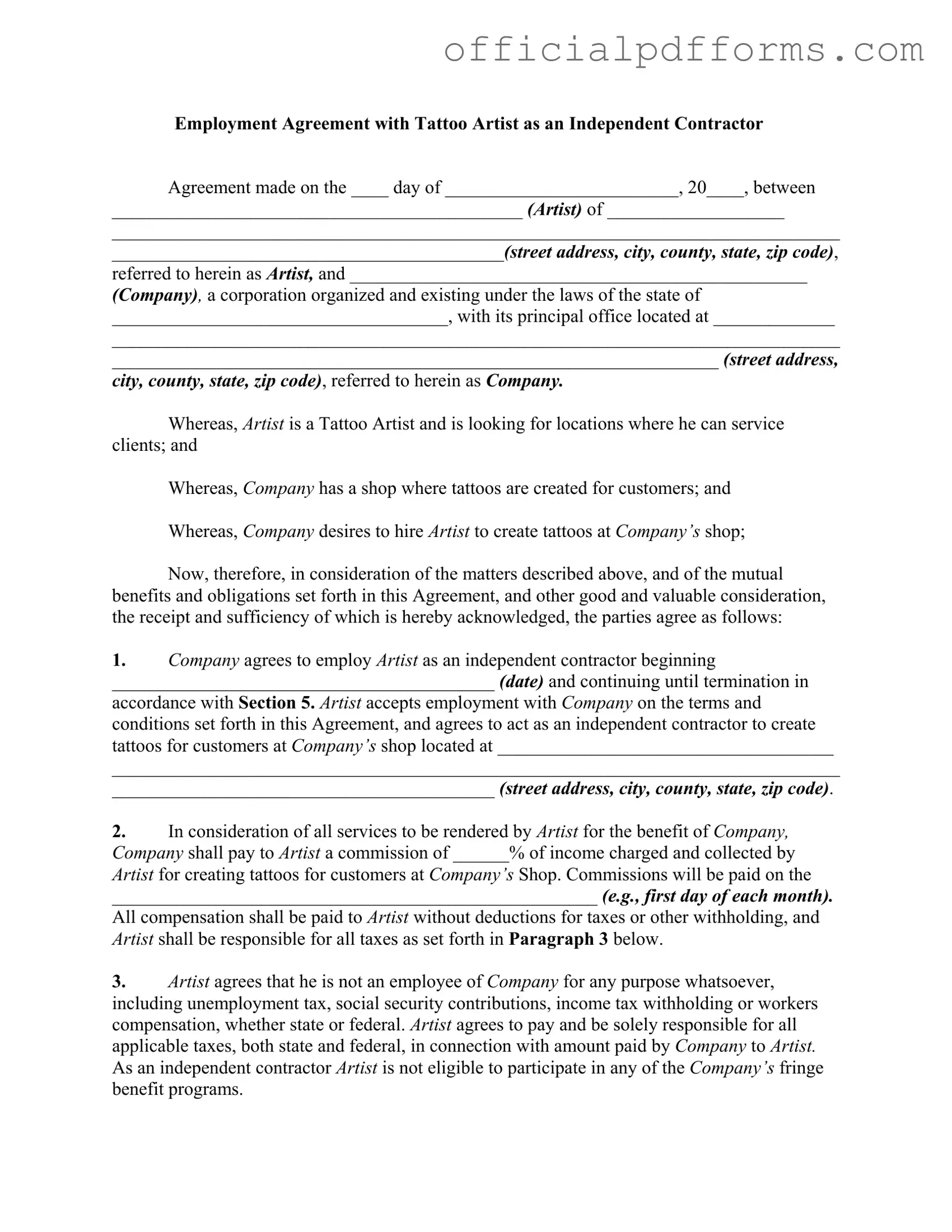Fill in a Valid Tattoo Shop Artist Agreement Form
The Tattoo Shop Artist Agreement form is a legal document that outlines the terms of engagement between a tattoo artist and a tattoo shop operating as an independent contractor. This agreement specifies the responsibilities, compensation, and obligations of both parties, ensuring clarity and protection in their professional relationship. Completing this form is essential for establishing a formal understanding and avoiding potential disputes.
To proceed, please fill out the form by clicking the button below.
Access Form Online
